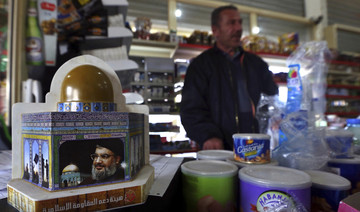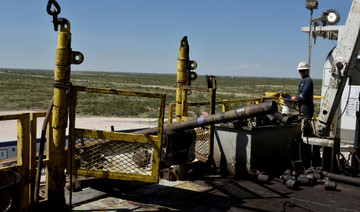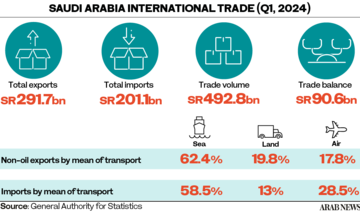WASHINGTON/SINGAPORE: Shortly after US President Donald Trump announced in May he would reimpose sanctions on Iran, the State Department began telling countries around the world the clock was ticking for them to cut oil purchases from the Islamic Republic to zero.
The strategy is meant to cripple Iran’s oil-dependent economy and force Tehran to quash not only its nuclear ambitions, but this time, its ballistic missile program and its influence in Syria.
With just days to go before renewed sanctions take effect Nov. 5, the reality is setting in: three of Iran’s top five customers – India, China, and Turkey — are resisting Washington’s call to end purchases outright, arguing there are not sufficient supplies worldwide to replace them, according to sources familiar with the matter.
That pressure, along with worries of a damaging oil price spike, is putting the Trump administration’s hard line to the test and raising the possibility of bilateral deals to allow some buying to continue, according to the sources.
The tension has split the administration into two camps, one led by National Security Adviser John Bolton, who wants the toughest possible approach, and another by State Department officials keen to balance sanctions against preventing an oil price spike that could damage the US and its allies, according to a source briefed by administration officials on the matter.
The global price of oil peaked just below $87 a barrel this month, a four-year high. Because of that concern, the source said, the administration is considering limited waivers for some Iranian customers until Russia and Saudi Arabia add additional supply next year, while limiting what Tehran can do with the proceeds in the meantime.
Revenues from sales could be escrowed for use by Tehran exclusively for humanitarian purposes, the source, who asked not to be named, said – a mechanism more stringent than a similar one imposed on Iran oil purchases during the last round of sanctions under US President Barack Obama.
“If you’re the administration, you’d like to ensure you don’t have a spike in the price. So, you are better off from mid-2019 onwards to aggressively enforce the barrels side of reducing to zero and in the interim aggressively enforcing the revenue side,” the source said.
Such concessions could be problematic for the White House as it seeks stricter terms than under Obama, who along with European allies imposed sanctions that led to an agreement limiting Iran’s nuclear weapons development.
The State Department declined comment for this story, but the administration has confirmed Washington is considering waivers. US Treasury Secretary Steven Mnuchin told Reuters that countries will first have to reduce purchases of Iran’s oil by more than the 20 percent level they did under the previous sanctions.
’A bit unpredictable’
US Treasury and State Department teams have traveled to more than two dozen countries since Trump pulled out of the nuclear deal on May 8, warning companies and countries of the dangers of doing business with Iran.
US allies Japan and South Korea have already ceased importing Iran’s crude. But the situation is less clear among other, bigger buyers.
Brian Hook, the State Department’s special representative for Iran, and Frank Fannon, State’s top US energy diplomat, most recently met with officials in India, Iran’s No. 2 buyer, in mid-October after a US source said for the first time that the administration was actively considering waivers.
An Indian government source said India told the US delegation that rising energy costs caused by a weak rupee and high oil prices meant zeroing out Iranian purchases was impossible until at least March.
“We have told this to the United States, as well as during Brian Hook’s visit,” the source said. “We cannot end oil imports from Iran at a time when alternatives are costly.”
A US diplomat confirmed the discussions, saying limited waivers for India and other countries was possible.
India typically imports over 500,000 barrels per day (bpd) of Iranian oil, but has reduced that level in recent months, according to official data.
Discussions are also underway with Turkey, Iran’s fourth biggest crude buyer, even though Turkish President Tayyip Erdogan and Turkish ministers have openly criticized the sanctions.
An industry source in Turkey familiar with the talks told Reuters the country had cut Iranian imports in half already, and could get to zero, but would prefer to continue some purchases.
Obama’s administration granted a six-month waiver to Turkey, but the source said Turkey expected the Trump administration to impose tougher requirements for obtaining waivers that could potentially cover shorter periods.
“It could be for three months, or they may not get a waiver at all. It is all a bit unpredictable this time, as we understand a lot of things are up to Trump,” the source said.
The situation is least clear in China, Iran’s biggest customer, whose state-owned buyers are also seeking waivers. The country took in between 500,000 and 800,000 bpd from Iran in the past several months, a typical range.
Beijing’s signals to its refiners have been mixed, said the two sources. Last week, Reuters reported Sinopec Group and China National Petroleum Corp. (CNPC), the country’s top state-owned refiners, have not placed orders for Iranian oil for November because of concerns about the sanctions.
Joe McMonigle, energy analyst at Hedgeye in Washington, said he expected the administration would have to accept some level of Iranian oil buying from China, given its consumption.
“Of all the countries, I don’t think they think China is going to zero,” he said.
US State Department’s Fannon is scheduled to travel to Asia in coming days, with a speech in Singapore planned for Oct. 30; an official did not say if Fannon would use the trip to discuss Iran with China.
Trump’s Iran sanctions resolve faces test from oil-thirsty China, India
Trump’s Iran sanctions resolve faces test from oil-thirsty China, India
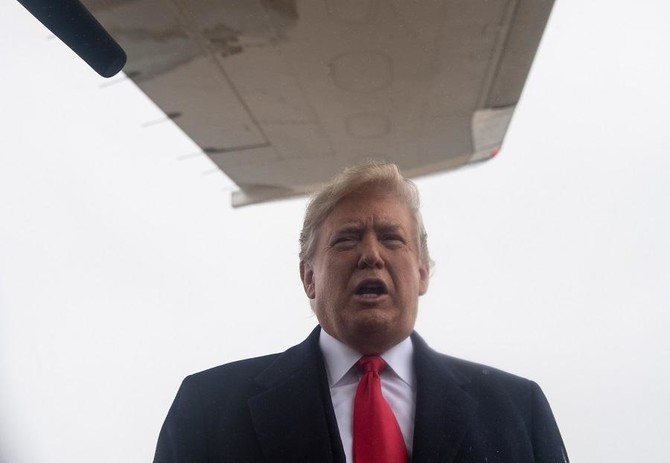
- With just days to go before renewed sanctions take effect Nov. 5, the reality is setting in: three of Iran’s top five customers – India, China, and Turkey — are resisting Washington’s call to end purchases outright
- US President Donald Trump announced in May he would reimpose sanctions on Iran
Oil creeps back up after three days of losses

Oil prices crept up on Thursday, clawing back some of the previous three days’ losses.
The gains were made despite the US Federal Reserve entertaining a further tightening of interest rates if inflation remains sticky, a move that could hurt oil demand.
Brent crude futures were up 92 cents, or 1.1 percent, at $82.82 a barrel by 1317 GMT. US West Texas Intermediate crude futures were 97 cents, or 1.3 percent, higher at $78.54. Both benchmarks fell more than 1 percent on Wednesday for their third straight day of losses.
Saudi crude exports
Saudi Arabia’s crude exports reached 6.41 million barrels per day in March, according to an analysis from the Joint Organizations Data Initiative.
This figure increased by 96,000 bpd, or 1.52 percent, compared to the previous month, marking a nine-month high. Furthermore, the data indicated that the Kingdom’s crude production fell to 8.97 million bpd, reflecting a monthly decrease of 0.42 percent.
This can be linked to the voluntary oil production cuts adopted by members of the Organization of the Petroleum Exporting Countries and their allies, known as OPEC+. Saudi Arabia announced in March the extension of its 1 million bpd cut, initially implemented in July 2023, until the end of the second quarter of 2024.
The Ministry of Energy said that the Kingdom’s production will be approximately 9 million bpd until the end of June.
Meanwhile, refinery crude output, representing the processed volume of crude oil yielding gasoline, diesel, jet fuel, and heating oil, fell by 4 percent compared to the previous month, reaching 2.56 million bpd, according to JODI data.
IMF demands Pakistan secure parliamentary approval on reforms for loan agreement— official
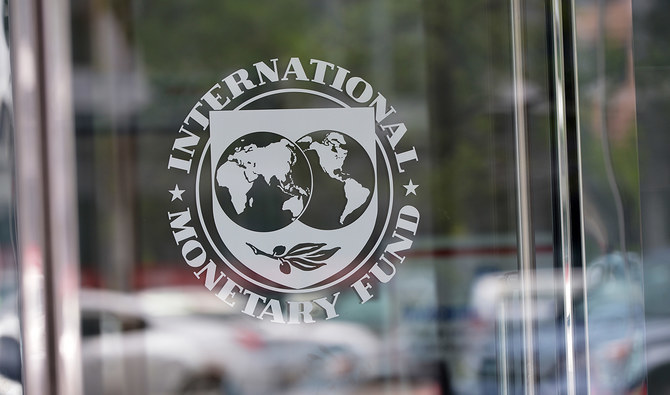
- Government will present “prior actions” needed to secure IMF loan in federal budget next month, says finance ministry official
- Leading economist says Pakistan left with no option but to secure IMF bailout to meet external financing needs of $80 billion
ISLAMABAD: The International Monetary Fund (IMF) has asked Pakistan to seek parliamentary approval on major economic reforms related to the energy, power, tax sectors and on the privatization of state-owned enterprises (SOEs) before starting formal talks for another loan program, a finance ministry official said on Thursday.
Facing low foreign exchange reserves, currency devaluation and high inflation, Pakistan last month completed a short-term $3 billion IMF program that helped stave off a sovereign default. However, the government of Prime Minister Shehbaz Sharif has stressed the need for a fresh, longer-term program with the global lender.
An IMF mission reached Islamabad last week to negotiate with Pakistani authorities for a fresh bailout program, holding talks with officials on reforms in key economic sectors. The mission is wrapping up its visit today, Thursday, without reaching any staff-level agreement with Islamabad.
The government would present the economic reforms demanded by IMF or “prior actions” in parliament in the Finance Bill 2024-25 likely to be presented on June 7, the finance ministry official with knowledge of the negotiations, said on condition of anonymity.
“The IMF has suggested authorities to get parliamentary approval for the new loan program’s targets and conditions before initiation of the formal talks,” the official told Arab News.
“In fact, these are the prior actions that Pakistan is required to take care of before reaching a staff-level agreement with the Fund for the new bailout package.”
The international lender has urged Islamabad to overhaul its SOEs and introduce tax, energy and power reforms. Pakistan has had to take painful measures in line with the IMF’s demands since 2022, which included hiking fuel and food prices.
The finance ministry official said the government intends to introduce key reforms in the energy and power sectors in line with the IMF’s demands, besides broadening the tax base through progressive initiatives.
“The government will take all parliamentary parties into confidence over the digitalization of the Federal Board of Revenue and the privatization of the SOEs,” he added.
Sajid Amin, a senior economist and deputy executive director at the Sustainable Development Policy Institute (SDPI), said the government had “no option but to secure the IMF loan program.” He said the IMF’s program was critical in helping Pakistan meet its external financing needs of around $80 billion in the next three years.
“The IMF wants political ownership of the loan program and that’s why it is pushing the government to get all the targets and conditions approved by the parliament,” Amin told Arab News.
“The biggest challenge for the government is to convince the coalition partners and opposition over its reforms agenda to secure the IMF loan,” he said.
Amin warned the upcoming IMF program would be the “toughest” one for the government as it would not be easy for it to complete it.
Goldman Sachs to establish regional headquarters in Riyadh: report
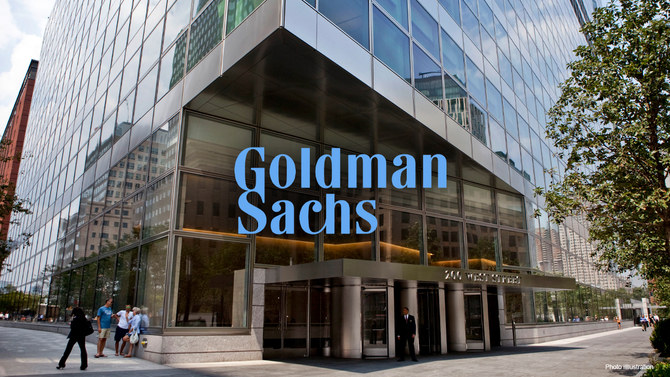
RIYADH: Goldman Sachs Group is set to become the first Wall Street bank to establish its regional headquarters in Saudi Arabia as it has reportedly obtained a license from the Ministry of Investment, reported Bloomberg.
As per the recently approved laws in Saudi Arabia, companies with state contracts must have a regional headquarters in the Kingdom with a minimum of 15 employees.
Arab News contacted the Investment Ministry to get a confirmation of the news but officials declined to comment.
It would be pertinent to mention here that Goldman Sachs currently has offices in Doha, Riyadh and Dubai.
Saudi Arabia has outperformed its target for attracting regional headquarters, with over 180 companies now established in the Kingdom. This number surpassed the initial goal of securing 160 HQs by the end 2023.
Saudi Arabia offers tax incentives for foreign companies that locate their regional headquarters in the Kingdom, including a 30-year exemption for corporate income tax.
The tax incentives include zero income tax for foreign entities that move their regional headquarters in the Kingdom, and these benefits can be availed from the date of the regional headquarters issuance license, according to Ministry of Investment.
Saudi Arabia issues 54 industrial licenses in March
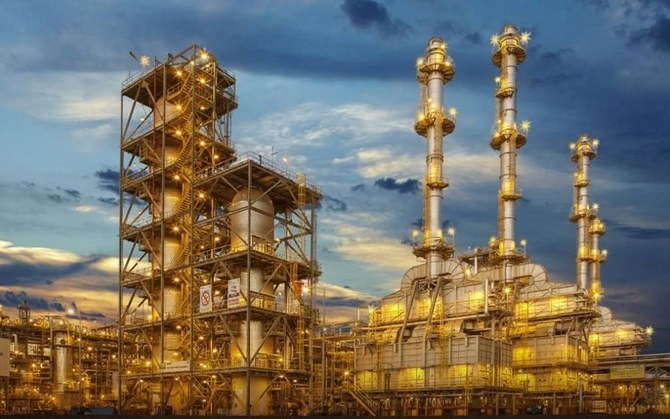
RIYADH: Saudi Arabia maintained the issuance of over 300 industrial licenses in the first quarter of 2024, consistent with the previous year, official data has revealed.
According to a statement released from the Kingdom’s Ministry of Industry and Mineral Resources, as many as 324 industrial permits were issued in the first three months of the year, with 54 approvals issued in March alone.
The report further showed that the volume of investments in March amounted to SR1.047 billion ($279 million).
This falls in line with the Saudi Arabia’s ambition to transform mining into a foundational industrial pillar of the country’s economy.
It also aligns with the ministry’s goal to strengthen the sector as well as contribute to the ongoing developments in accordance with Vision 2030.
Moreover, the report, which was issued by the ministry’s National Industrial and Mining Information Center, disclosed that the permits in March were distributed across several sectors, including the manufacturing of non-metallic mineral and food products and formed metal goods as well as chemicals and paper and its products.
According to the analysis, the new industrial licenses were distributed among multiple regions, including the Eastern Province, Riyadh and Makkah, as well as Qassim, Jazan, Madinah, Al-Jouf, and Al-Baha.
The distribution of new permits shows that small enterprises comprised 77.78 percent, with medium-sized companies following at 22.22 percent.
In terms of the type of investments, national factories accounted for the largest percentage of the total licenses, with 98.15 percent, followed by foreign establishments with 1.85 percent.
Furthermore, the study also indicated that the number of factories existing and under construction in the Kingdom until the end of the same month reached 11,832 factories, up from 11,757 facilities in February, with an investment volume of SR1.528 trillion.
Meanwhile, 69 factories started production in March, with an investment volume of SR1.339 billion.
The ministry issues its report monthly to establish the sector’s most critical indicators in Saudi Arabia, demonstrating the extent of change and the growth of industrial investments.
In April, the Kingdom introduced the Mining Exploration Enablement Program, inviting global firms and explorers to participate in the initiative in an attempt to further expand the sector.
According to a statement at the time, Saudi Arabia’s Ministry of Industry and Mineral Resources and the Ministry of Investment extended invitations to international companies in the sector to register for the scheme.
The statement further added at the time that the program is expected to boost exploration activities, optimize the value extracted from the mining sector, and expand the Kingdom’s survey potential by focusing on uncharted territories.
Saudi Arabia to reshape global tourism landscape, says Al-Khateeb
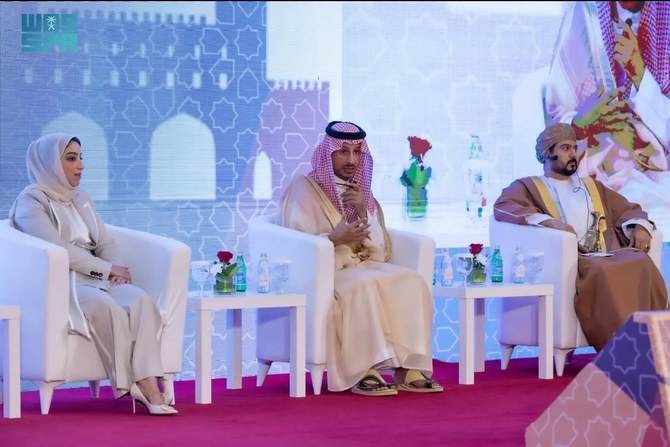
RIYADH: Saudi Arabia is on track to change the map of tourism on a global level, according to a top minister.
Participating in a dialogue session on the sidelines of the 50th UN Tourism Regional Commission for the Middle East taking place from May 22 to 24 in Muscat, Saudi Tourism Minister Ahmed Al-Khateeb stressed that the Kingdom is working in cooperation with regional member states of the organization to further develop the industry, according to the Saudi Press Agency.
This is in line with Saudi Arabia’s National Tourism Strategy, which aims to reach 150 million visitors by 2030, grow the private sector’s contribution, and attract direct foreign investments, adding to the economic growth and diversification.
“The Kingdom will change the map of tourism in the world, and the opportunities and facilities that we provide to investors will make the tourism sector more attractive, and we are proceeding in a distinctive way in building the sector,” Al-Khateeb affirmed.
During the session, the minister also indicated that Saudi Arabia has begun to develop the tourism division as part of its Vision 2030 plan, noting that the development efforts have succeeded in raising the sector’s contribution from 3 percent of the local economy to 4.5 percent by the end of the last year.
Al-Khateeb also drew attention to the fact that the Middle East has great potential and natural resources that enable it to become one of the most important tourist destinations in the world.
He explained that the countries in the region are moving as a single bloc in the right direction regarding developing the tourism sector, as they have begun designing plans and strategies to benefit from this promising industry.
The minister highlighted that attracting and qualifying the national human resources are two important factors for developing the regional sector, stressing that the Saudi Ministry of Tourism pays great attention to the issue of qualifying national cadres working in the field.
The body also works to attract young men and women in the Kingdom to work in the industry.
In April, the deputy minister of destination enablement at the Ministry of Tourism said that Saudi Arabia is open to readjusting its goal of attracting 150 million visitors by 2030 if those numbers are achieved ahead of time.
Speaking in an interview with Arab News on the sidelines of the first day of the Future Hospitality Summit in Riyadh, Mahmoud Abdulhadi explained that goals are adjusted based on performance.
“As we hit our target seven years ahead of target, our 100 million target, we therefore now have a new goal. I’m sure if we were to hit that new target with a significant overperformance in terms of the timeline, our targets would also be adjusted,” Abdulhadi said.


